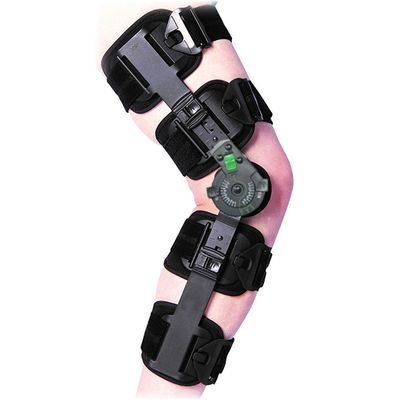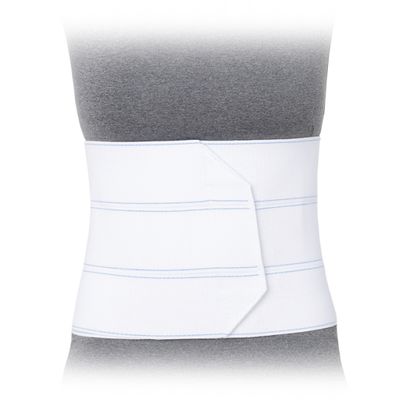Table of Contents
Abdominal Binder
An Abdominal Binder/Support is a wide compression band worn around the abdomen to provide support and stability to the lower torso. It is commonly used for medical, post-operative, or therapeutic purposes, offering benefits for recovery and pain management.
Key Features
- Compression Support: Abdominal binders provide uniform compression to the abdominal area, reducing swelling and promoting healing. This is especially beneficial after surgeries like C-sections, hernia repairs, or abdominal liposuction.
Stabilization: The support helps to stabilize the abdominal muscles and internal organs, reducing the risk of post-surgical complications such as hernias or muscle strain.
Pain Relief: By supporting the abdominal area, the binder can reduce discomfort or pain from abdominal injuries or surgeries.
Adjustability: Most abdominal binders are made with adjustable straps or Velcro, ensuring a snug and comfortable fit for various body sizes.
Postpartum Use: Abdominal binders are commonly recommended for women after childbirth, particularly after a C-section, to support weakened abdominal muscles and ease recovery.
Applications
- Post-surgical Recovery: Helps maintain stability after surgeries such as hernia repair, bariatric surgery, or abdominal reconstruction.
- Postpartum Recovery: Supports weakened muscles and helps with recovery after childbirth.
- Hernia Prevention: Can be used to prevent or support hernias by stabilizing the abdominal wall.
- Pain Management: Alleviates pain caused by muscle strain, abdominal injuries, or surgeries.
Abdominal binders are usually made of elastic, breathable fabric for long-term comfort and support. They provide an essential aid in the healing process, allowing individuals to recover with reduced discomfort and enhanced mobility.
Trend ROM Hinged Knee
The Trend ROM Hinged Knee is an adjustable range of motion orthosis that stabilizes the knee for patients suffering from mild to moderate strains, sprains, or ligament tears. Our Trend TX2 Moisture Wicking Neoprene provides support and compression while also being lightweight and breathable. Sized and universal options are available for a customized contoured fit.
-
PDAC Approved Codes
- L1832
- L1833
-
Key Features
- Provides post-injury protection, compression, and support
- Front closure wraparound
- Trend TX2 Moisture Wicking Neoprene provides a custom contoured fit
- Rubber tabs allow easy re-adjustment and application
- Easy to use controlled range of motion hinge
-
Indications
- Mild to moderate ACL, PCL, MCL, and LCL Sprains
- Meniscal or patellar instabilities
- Mild osteoarthritis
- Mild knee sprains and strains
-
Sizing Guide
- DC-032 (Up to 28”) UNIVERSAL
- DCT-002-1 (Up- 15”) XS
- DCT-002-2 (15- 18”) S
- DCT-002-3 (18- 21”) M
- DCT-002-4 (21- 24”) L
- DCT-002-5 (24- 26”) XL
- DCT-002-6 (26- 28”) 2XL
- DCT-002-7 (28- 30”) 3XL
Key Features of a Hinged Knee Orthosis:
- Adjustable Range of Motion (ROM):
- Allows controlled flexion and extension of the knee to aid in gradual recovery.
- Often has dial locks or stops to set specific degrees of motion restriction.
- Stabilization and Support:
- Reinforces the knee joint, preventing excessive lateral movement.
- Reduces strain on injured ligaments or post-operative structures.
- Hinged Mechanism:
- Mimics natural knee movement while preventing hyperextension.
- Can be single-axis or polycentric hinges for improved biomechanics.
- Comfortable and Adjustable Fit:
- Features adjustable straps, cushioned liners, and breathable materials.
- Designed for long-term wear without discomfort.
Common Uses of Hinged Knee Orthoses:
- Post-surgical recovery (e.g., ACL reconstruction, meniscus repair).
- Ligament injuries (ACL, MCL, PCL, LCL sprains or tears).
- Osteoarthritis relief (offloading knee pressure).
- Sports injury prevention (especially in high-impact sports).
- Patellar stabilization (for conditions like patellar subluxation).



